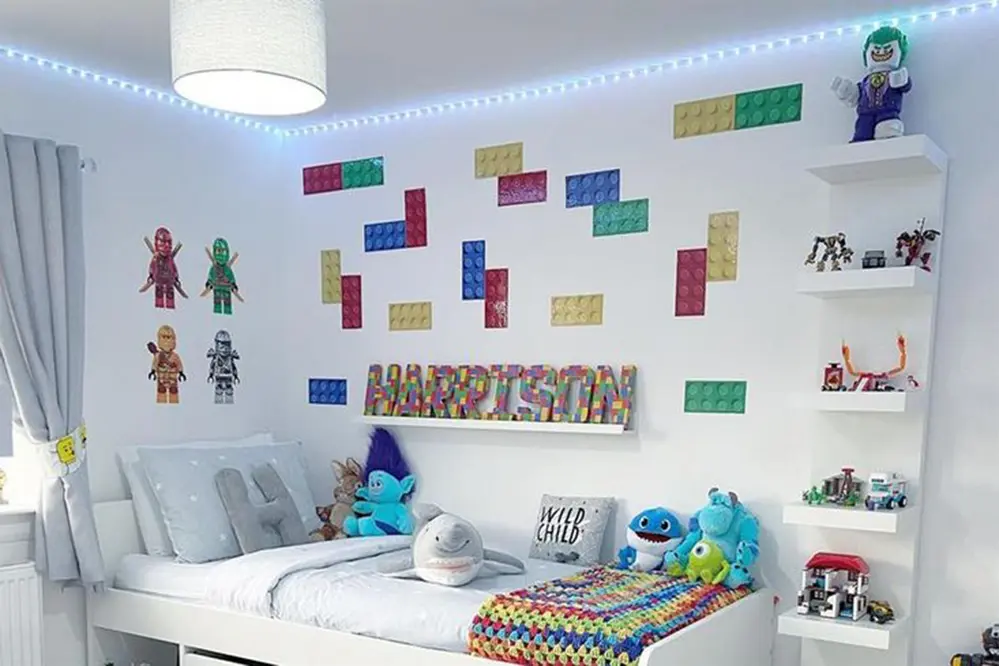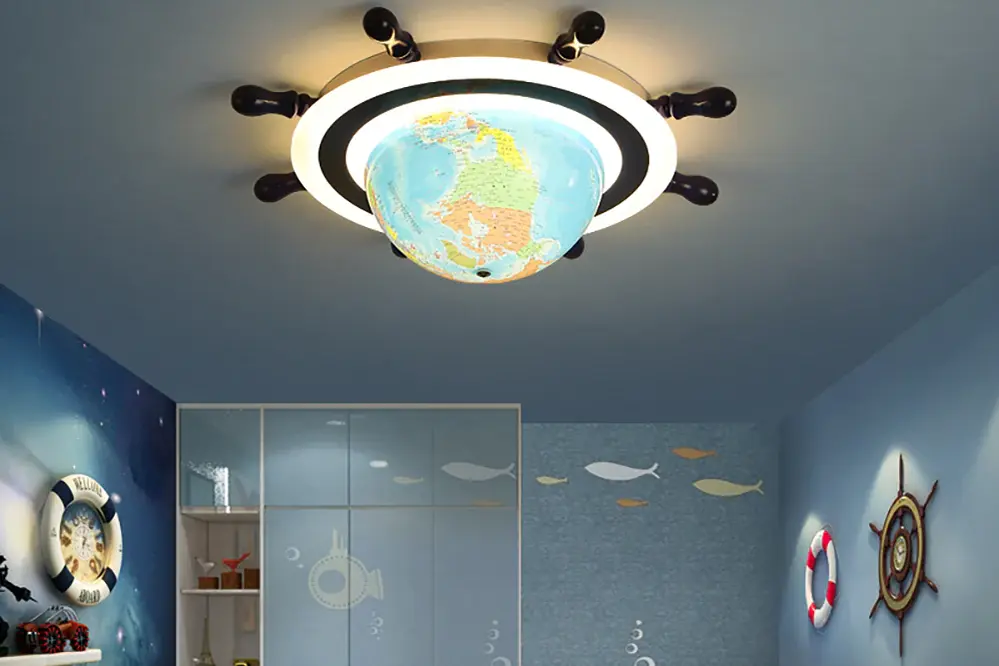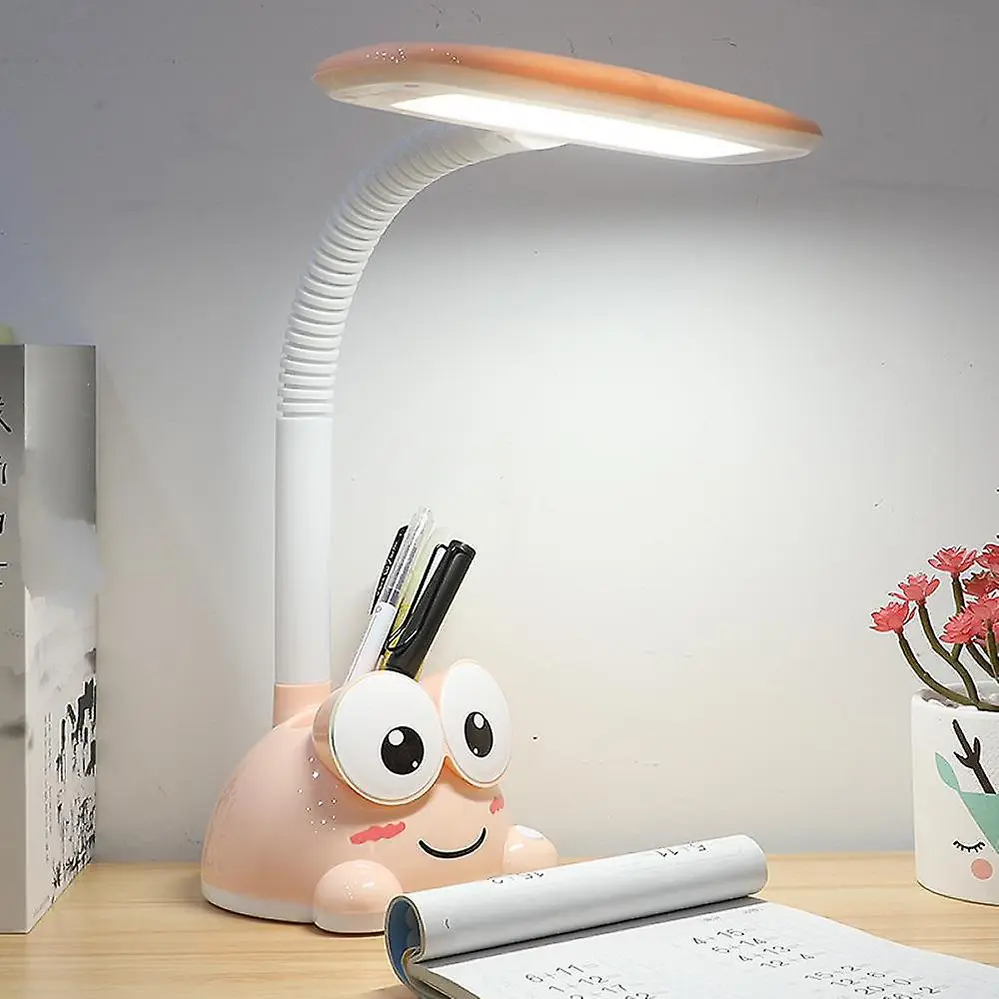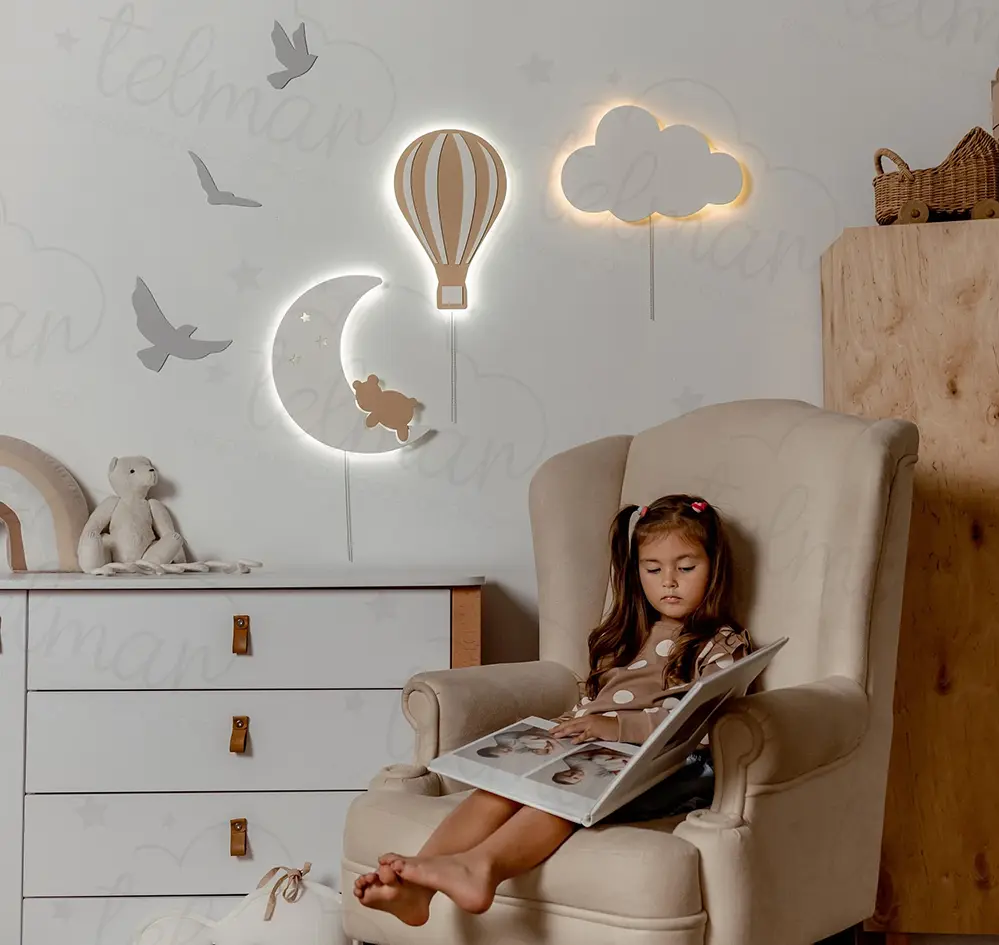How to choose lighting for kids rooms is a common dilemma many parents face. Picture this: your child is struggling to fall asleep, and their room feels either too bright or too dim. This scenario highlights the importance of selecting the right lighting to create a comfortable and conducive environment for your child.
Addressing this issue is vital because the right lighting can significantly impact a child’s mood, sleep patterns, and overall well-being. Studies have shown that children exposed to appropriate lighting are more likely to have better sleep quality and improved cognitive function.
There are various solutions to consider, from incorporating natural light to selecting adjustable fixtures that cater to different activities. Understanding these options can help you create a balanced and inviting space for your child.
Eager to learn more about optimizing your child’s room with the perfect lighting? Continue reading to discover expert insights and practical tips that will guide you in making informed decisions.
Understand Lighting Needs

Effective lighting setups require balancing functionality with creativity, considering how the room will be used throughout the day.
Kids’ rooms demand versatile lighting configurations that adapt to various activities.
Firstly, they must have good ambient lighting, which provides overall illumination and ensures a safe environment.
Additionally, task lighting plays a crucial role for activities such as homework or art projects.
Choosing fixtures that offer adjustable light levels can cater to different needs, enhancing both play and study sessions.
Ultimately, the key is to create a lighting scheme that grows with the child, fostering a productive and joyful space.
Types of Lighting for Kids’ Rooms
Ambient lighting serves as the backbone of a well-lit room, offering consistent illumination throughout. Ceiling-mounted fixtures, such as chandeliers, provide broad light coverage across the entire space, ensuring the room feels welcoming and secure.
Task lighting, on the other hand, focuses on specific areas like study desks. Consider installing adjustable desk lamps to accommodate various activities. Additionally, night-lights play a fundamental role, offering comfort and safety during nighttime. This cohesive mix promotes an environment where creativity and productivity flourish.
Ambient Lighting

Selected as the primary lighting source, ambient lighting is essential for creating a warm and inviting atmosphere. Ceiling fixtures like chandeliers or flush mounts often fulfill this role gracefully.
Closely tied to the concept of a balanced space, ambient lighting ensures consistency. It casts an even glow that makes navigation and activities safer while enhancing the room’s aesthetic charm.
Ambient lighting significantly impacts mood, creating a serene, stress-free environment where creativity thrives.
To optimize the benefits, consider the light’s color temperature and coverage. Warmer tones can make the room feel cozier, while cooler tones invigorate the space. Simply put, ambient lighting lays the foundation upon which all other types of lighting build.
Task Lighting

Task lighting is paramount when it comes to creating specific zones for focused activities, such as homework, reading, or crafts. This lighting enhances efficiency and minimizes eye strain.
Consider the placement of these lights to avoid glare. Properly positioned task lamps ensure the child remains focused and comfortable.
Choosing adjustable fixtures can be vital. These allow direct light precisely where it’s needed, enhancing versatility (especially pivotal during study sessions) and convenience.
Selecting lights with reduced glare and even light distribution will ensure comfort and clarity, reducing the likelihood of eye fatigue.
Opt for LED desk lamps or clip-on lights which provide bright, energy-efficient illumination. LED lights are beneficial for their longer lifespan, and some models also offer adjustable color temperatures.
Ultimately, the key to effective task lighting is understanding the child’s needs. Thoughtfully implemented task lighting fosters an environment conducive to concentration and learning, essential for their development.
Accent Lighting

Accent lighting adds charm, drawing attention to unique features and aiding in room personalization.
In a kid’s room, accent lighting can be a wonderful tool, casting delightful shadows, highlighting favorite art pieces, or accentuating cozy corners where they retreat to read or dream. Choices like wall-mounted lights, fairy lights, and under-shelf lighting can foster an inviting, magical atmosphere.
Exploring accent lighting opens a pathway to creativity. They can experiment with various colors, shapes, and sizes to match the child’s ever-evolving interests, enhancing their sense of wonder and ownership of their space.
Additionally, it’s wise to incorporate adjustable accent lights to accommodate the changing needs and preferences of the growing child. Investing in dimmable options also provides flexibility, allowing the child to adapt their room’s ambiance to suit different activities, from playtime to bedtime, thus ensuring the room remains a friendly and functional haven.
Choosing Safe Lighting Options
The priority in any child’s room should be safety. Parents and guardians should thoroughly evaluate lighting options.
UL Lighting, a leading global safety certification company, highlighted the importance of choosing lights that meet rigorous safety standards, including proper insulation and heat dissipation.
Firstly, it’s essential to avoid lights with exposed wiring. Children’s curiosity can lead to unintended accidents if wires are accessible or frayed, posing an electrocution or fire hazard.
Furthermore, opt for LED lights over traditional bulbs. LEDs produce less heat, reducing the risk of burns and are more energy-efficient, promoting both safety and sustainability.
Ensuring the lighting fixtures are securely mounted and using shatterproof materials will also significantly enhance safety.
Selecting the Right Bulbs
Choosing the right bulbs can significantly impact the ambiance and functionality of a child’s room.
Lighting technology has made remarkable strides, providing an array of options that cater specifically to various needs. Parents now have an impressive selection to choose from.
When it comes to kids’ rooms, it’s wise to prioritize bulbs with a color temperature of around 3000K. This level mimics natural light, which is known to enhance mood and concentration during study time.
Bulbs with dimming capabilities are also beneficial, allowing the room to adapt from reading mode to bedtime seamlessly. This versatility ensures the lighting complements every child’s routine.
Adopting eco-friendly LED bulbs will not only ensure safety but also contribute to energy conservation.
Incorporating Fun and Personalization
How can one seamlessly blend fun elements and personal touches into the selection of lighting fixtures?
Industry professionals noted a significant trend towards customized lighting solutions, which allow parents to match fixtures with their child’s unique interests. This approach adds character to the space and creates a more engaging environment.
Now, it’s not just about selecting fixtures; it’s also essential to consider incorporating personalized elements like custom lampshades or themed nightlights. These additions infuse a sense of individuality and foster a connection between the child and their room.
Many suppliers offer a range of customizable options, allowing one to select colors, shapes, and designs that resonate with the child’s tastes. Whether it’s a spaceship chandelier for an aspiring astronaut or a princess-themed nightlight, the options are extensive and colorful.
Incorporating these fun and personalized elements makes room transformations both magical and memorable.
Energy Efficiency Considerations
Energy efficiency plays a pivotal role.
Selecting energy-efficient lighting not only lowers utility bills but also contributes to environmental sustainability. LED lights, for instance, are known for their superior efficiency and longevity, reducing the need for frequent replacements. Additionally, choosing fixtures with dimming capabilities can further optimize energy consumption, fostering both practicality and eco-responsibility.
Smart bulbs enhance efficiency.
Modern innovations such as motion-sensor lights and programmable timers go a long way in ensuring that lights are only used when necessary. This not only maximizes energy savings but also adds a layer of convenience and care, ensuring the safety and comfort of the child.
When looking to optimize energy usage, LED bulbs stand out. Not only do these bulbs use significantly less energy compared to traditional incandescent bulbs, but they also produce less heat, contributing to a safer environment.
By prioritizing energy-efficient solutions, parents can achieve a harmonious blend of cost-effectiveness and environmental stewardship. These choices not only benefit the household budget but also instill in children an early appreciation for sustainable living practices.
Lighting for Different Ages
Children of different ages require varied lighting solutions to meet their unique needs, promote safety, and encourage productivity.
For toddlers, soft lighting that minimizes glare creates a calming environment, aiding them in establishing healthy sleep patterns. As children grow older, adjustable lighting options become essential, accommodating diverse activities like studying and playing.
Balancing “task-oriented” and “ambient” light becomes crucial to optimizing their learning environments.
Infants and Toddlers
For the youngest family members, lighting should prioritize comfort and safety, fostering a serene and secure environment.
- Soft, warm lighting: Opt for soft, warm-toned lights to promote tranquility and reduce harsh glare.
- Night lights: Install night lights for gentle illumination, assisting in nighttime feedings and diaper changes.
- Dimmer switches: Consider light fixtures with dimmer switches to adjust brightness levels according to different activities and times of day.
- Safe design: Ensure that all lighting fixtures and cords are out of reach to prevent accidents.
Soft lighting creates a calming atmosphere, essential for soothing infants and helping toddlers establish sleep routines.
Ultimately, a well-lit room contributes to the overall well-being and development of infants and toddlers.
School-age Children
As children transition into their school years, their lighting needs evolve, requiring a balance of functionality and comfort. Proper lighting can enhance their ability to concentrate on homework and other tasks, fostering an environment conducive to academic success and creativity.
Bright overhead lighting remains essential in this stage.
Incorporating desk lamps offers focused task lighting. Adjustable designs (with color-changing capabilities) are ideal.
Children benefit from a mixture of natural and artificial lighting to reduce eye strain during extended study sessions.
Task-specific lighting should be versatile enough to accommodate various activities, from arts and crafts to reading.
Additionally, use energy-efficient bulbs to teach environmental responsibility early on, offering lessons in sustainability while enhancing their lighting experience.
Ultimately, the right lighting choices work in harmony with the child’s needs and nurturing their curiosity. Well-lit rooms encourage exploration, learning, and growth.
Teenagers
When considering how to choose lighting for kids rooms for teenagers, focus on their evolving needs and individuality.
Teenagers require a combination of functional lighting and mood lighting to support their multifaceted lifestyles. Adjustable desk lamps with dimmer switches are perfect additions for focused study sessions. Conversely, string lights or LED strips can help them personalize their space, further encouraging a sense of ownership and creativity.
Moreover, providing varied lighting options helps accommodate shifts between academic work, relaxation, and social activities. Ease of use is paramount; thus, incorporating smart lighting solutions empowers teenagers to control their room’s ambiance with the touch of a button.
Overall, by prioritizing adaptability and multi-functional designs, one ensures that teenagers have a well-illuminated, customized environment. This approach fosters an inviting space where they can thrive, balancing school tasks, hobbies, and downtime efficiently and stylishly.
Maintenance and Upkeep
To ensure longevity and optimal performance of any lighting setup in kids’ rooms, regular maintenance is crucial. This involves simple, yet effective practices that prolong the lifespan of various lighting fixtures.
First, the cleaning of light fixtures should not be overlooked. Dust and grime accumulate over time, diminishing the brightness and efficiency of the lights.
Monthly dusting and occasional deep cleaning can prevent such build-up. Using proper cleaning agents and soft cloths will ensure the light fixtures remain in pristine condition without damage.
Moreover, it’s important to check electrical connections periodically. Loose connections can lead to potential hazards and reduced efficiency in lighting output.
Replacing lightbulbs promptly when they burn out is another essential task. Opt for energy-efficient LED bulbs, which not only save energy but also tend to last longer and require fewer replacements over time.
Finally, involving kids in the upkeep process can be a good practice. It teaches them responsibility and the importance of maintaining their living spaces. Together, maintaining lighting will ensure a well-lit, safe, and inspiring environment.
Conclusion
Choosing the right lighting for kids’ rooms is essential for creating a nurturing and safe environment. Parents should consider the room’s function, their child’s needs, and personal style preferences. Balancing ambient, task, and accent lighting can transform any room into an inspiring space conducive to growth and learning. By following these guidelines, families can ensure a beautifully lit room that encourages children to thrive, fostering creativity and comfort.





